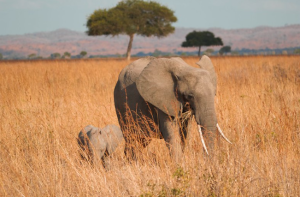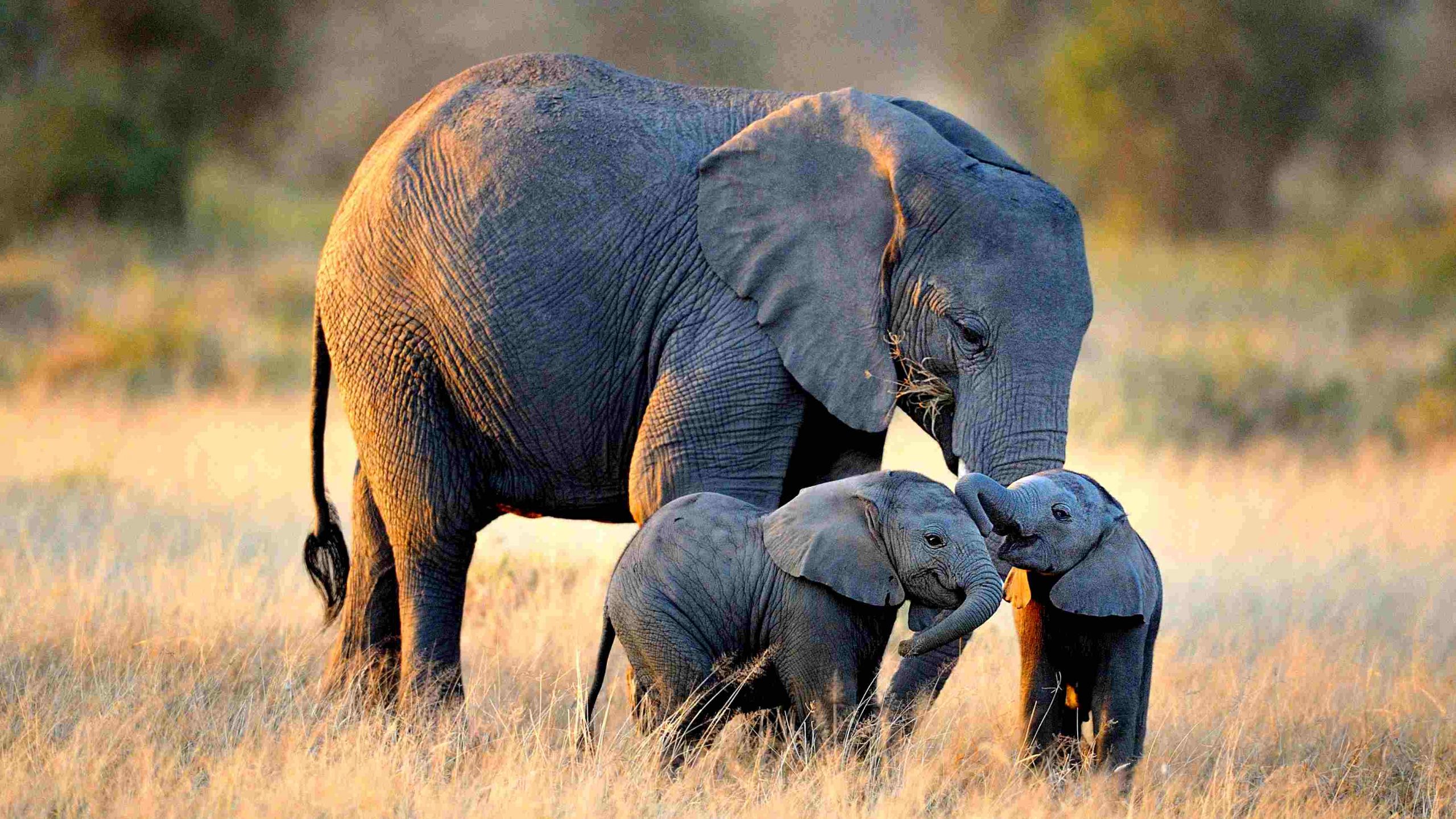Largest living mammals “Elephants”
Largest living mammals “Elephants”
Largest living mammals “Elephants” : There are numerous types of elephants found in Africa and Asia. These elephants have three distinct species and at least three subspecies. The African Bush Elephant (a.k.a. African savanna elephant) is the largest of them all. Actually, it is the largest living terrestrial animal on the planet. The African forest elephant was formerly considered a subspecies of the African bush elephant. However, it has since been reclassified as a distinct species that was separated 2 to 7 million years ago. They are generally smaller and have more rounded ears and heavier trunks than their cousins.

African and Asia elephants
African elephants live in sub-Saharan Africa, the rain forests. These include; Central and West Africa and the Sahel desert in Mail, according to National Geographic. On the other hand, Asian elephants live in Nepal, India and Southeast Asia in scrub forests and rain forests. Besides, African elephants are the larger of the two species in the wild. Generally, they can live up to 70 years while the Asian elephants can live up to 60 years.
Different physical features of Africa and Asian elephants
The ears of the elephants are larger and resemble the shape of the African continent. On the other hand, Asia elephants have smaller, rounder ears, according to the San Diego Zoo. In the same way that humans tend to be right-handed or left-handed, elephants can also be right-tusked or left-tusked. Both male and female African elephants have large tusks and two “fingers” on the end of their trunks to help them pick items up. However, the Asian elephants have a single “finger” on the end of their trucks. But typically only male Asian elephants will grow large tusks, while the females and a few males have much smaller tusks. In fact, these are called tushes that don’t always grow outside the mouth. Both species eat all types of vegetation, including a variety of grasses, fruits, leaves, roots, etc.
Reproduction
Basically, male and female elephants become sexually mature between 8 and 13 years of age. Males will leave their herd around this time, as long as they’re able to find their own food and protect themselves. Females may not have their first calf until their middle teen years, while male may not father a calf until they are in their 30s. This is when they are large and strong enough to compete with other males, according to the National Zoo. Usually, only a single calf is born following a 22-month pregnancy and newborn calf weighs between 150 and 350lbs. Calves also tend to be hairy with long tail and very short trunks.
Behavior
Recent discoveries have shown that elephants can communicate over long distances. This is done by producing a sub-sonic rumble that can travel over the ground faster than sound through air. Other elephants receive the messages through the sensitive skin on their feet and trucks. It is believed that this is how potential mates and social groups communicate. Additionally, elephants are extremely intelligent animals and have memories that span many years. It is this memory that serves matriarchs well during dry seasons when they need to guide their herds. Sometimes for tens of miles, to watering holes that they remember from the past. They also display signs of grief, joy, anger and can as well play.

Physical
Elephants are incapable of jumping and as well can run at a maximum speed of 25 miles (40 km) per hour. Even when they are moving fast, they will keep at least one foot on the ground at all times. If you’ve ever seen photos of a baby elephant, you know that their bodies are covered in short hair. However, the growth of this hair reduces overtime, as they age. Unlike the hair on most mammals, the hairs on an elephant aid in cooling down its body in the hot climates of Africa and Asia.
Communication
Due to their high level of intelligence, they seem to have a more sophisticated form of communication than other animals. The fact that they experience emotions that are very similar to humans, they also show comfort through their form of communication. This is even more so when a baby is dead at birth or an elder member of the herd dies. As a matter of fact, mothers are extremely affectionate towards their calves. They are often seen touching them with their trunks just like humans will pat a child on the head. The position of the trunk is also a sign of communication among them. When the trunk is raised it can mean that a male is standing his ground. However, it can be considered a threat if another male has his raised as well.
Feeding
The digestion process for an elephant is very different from that of other animals. In fact, they need to consume lots of water and this is done through the trunk. Generally, they can consume up to 15 quarts of water at one time. Due to their large size, they can get food from the ground all the way up to high areas of trees. They can even use their trunks to reach fruits growing up compared to other animals. Furthermore, elephants can spend up to 16 hours a day looking for food. They don’t seem to be in a hurry looking for it, however take their time grazing. One of the reasons why they have to consume so much food daily is due to their bodies.
Habitat
One of the reasons why elephants have been able to survive for so long is due to their high level of intelligence. They also have the mentality to know when they have to move on. Here, they have to adjust to new habitats in order to continue to survive. They clear away trees and plants so that new forms of vegetation can grow there.
Why are elephants being hunted?
The main reason why elephants have been hunted out there is because of their ivory. This is worth a ton of money and so huge numbers of elephants were slaughtered in order to be able to cash in on such a business. Early attempts to remove the ivory tusks and to leave the elephants alive didn’t work. The elephants were simply too aggressive for this type of process and it was too dangerous for humans to take part. However, they need to put an end to the availability of legal hunts for elephants.
Sighted areas
Since the late 1980s, there has been a gradual increase in elephant population in the key elephant protected areas of Queen Elizabeth National Park, Murchison Falls National Park and Kidepo Valley National Park. The forest elephant is mainly found in Kibale National Park. Elephants have also been sighted in Sango Bay and are believed to be migrating and using habitats across the common international border of Uganda and Tanzania in search for water and forage.










Trackbacks & Pingbacks
[…] alone the rhinoceros and the elephant, the common hippo is one of the biggest animal on planet earth. A fully-grown male can weigh up to […]
[…] of wildlife and birdlife with famous destinations to clap eyes on lions, zebras, giraffes, elephants, cheetahs, leopards, impalas, Kobs, jackals, rhinos, wildebeests, antelopes to mention a few. With […]
Leave a Reply
Want to join the discussion?Feel free to contribute!